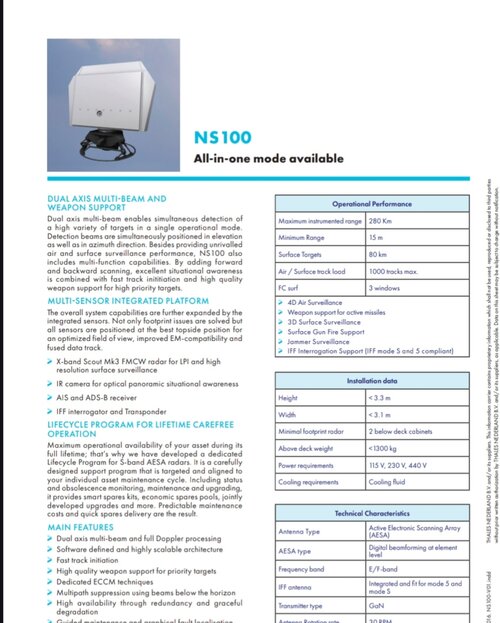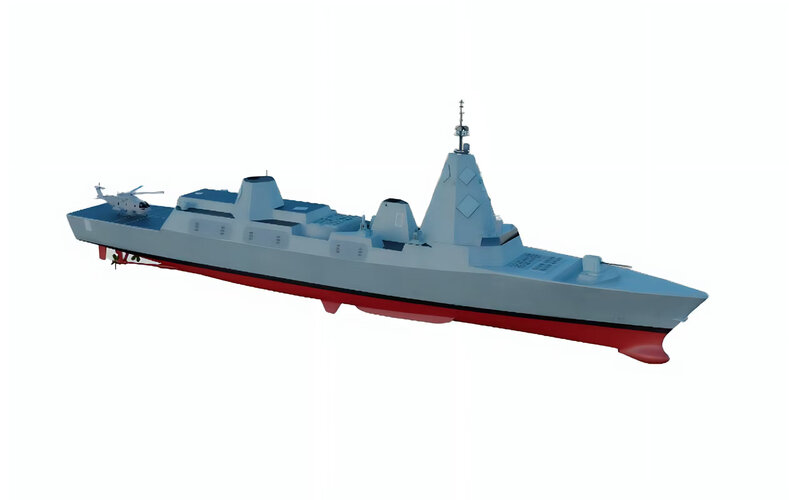50 is not viable. Look at what the LCS ended up with. 80 or so will probably work.
Is the Type 45's sensor suite worth installing into a new ship, or is it 20+ years out of date?
The Zumwalt Mini-Me offends me actually. It's an abomination that only a bean counter would love.
SAR is certainly an essential role, not to be stripped away in the interests of false economy. Surface warships have to be versatile because emergency response is so often required of them and emergencies by definition are unpredictable. Being able to cope with an emergency entails a broad set of capabilities.
Regarding the Type 45's sensor suite, sticking it in a new-ish frigate and expecting to serve for decades more would be insane.
This, I think, illustrates the difference between frigates and destroyers, as it is emerging, while 'cruiser' is a term that is going to be retired. The cruiser's role as a powerful, fast, ship able to hunt and kill over long-ranges is fulfilled by an SSN now. The only thing an SSN can't do that old cruisers or battlecruisers did was general disaster relief and peacetime projection of soft power by 'showing the flag' (like the Hood). Those roles can be performed by frigates, carriers, and LHDs etc.
'Destroyer' is an imprecise term but by default, and applied to a Type 45, it denotes a vessel that is at its best monitoring and controlling the battlespace around a fleet. The Type 45 in particular is focussed on air defence. The situation has changed since the requirements for the 45 were formulated and that's why simply moving its equipment into a frigate's hull for future battles won't work. At the high end, ballistic, hypersonic, and cruise missiles are increasing threats and at the low end the current situation in the Red Sea - and everywhere, actually - has shown that cheap, numerous drones are to be taken very seriously and using million-pound missiles to shoot them down or burn them on the water is unsustainable. From what I've gleaned, the Type 83 will be expected to deal with the high end, which makes situational awareness reaching into space will be essential, whether with on-board systems or by connecting with space-based capabilities. Dragonfire lasers can be expected for the low end. Certainly, they will be fleet defenders. The only reason why they wouldn't operate independently is that it would be overkill for most tasks, not inadequacy.
Overall, I think 'destroyer' is going to mean a vessel that is more than simply an escort and which, other than a carrier, might be the surface lookout and guardian for a fleet or other vessels such as carriers and amphibious or littoral vessels in a task force (along with the auxiliaries of course).
The Type 26 is specialised for anti-submarine warfare in RN service but is also called a 'Global Combat Ship' which denotes its other capabilities, not unlike those of an old-fashioned cruiser. 'Frigate' in this case, recalls the 'fully rigged' ship that is in fact quite sizeable and able to operate independently. Indeed, the Type 26 is very large compared with a 23 and not much smaller than a 45. Significantly, the 26 is optimised for ASW in the RN but in other navies - Canada, Australia, Indonesia - which don't have 45s, 26 variants will will be more multi-purpose. Again, since the RN has more diverse ship types, the 31 is called the 'General Purpose Frigate.'
What the 32 turns out to be is anyone's guess at this stage. So far, we have some talk about it being a 'drone mothership,' while Babcock has proposed a 'Type 31 Batch 2' with more modularity, and BAE Systems has proposed a fairly small 'Adaptable Strike Frigate', which suggests more of a littoral role.
So, while names of ship types seem very vague, it appears that the RN plans
could produce a range of complementary types if everything works out.



